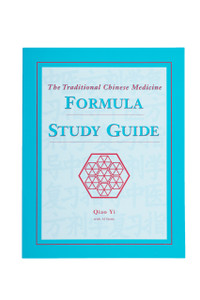
Softcover, 8 1/2 x 11 inches, 464 pages
ISBN 1-890029-41-6
The T.C.M. Materia Medica Clinical Reference and Study Guide is a quick-reference manual and study guide for the most important 316 classic single herbs used in Chinese Medicine. It consists of two parts.
The first part presents the individual herbs in nineteen chapters, corresponding to the commonly used functional treatment categories. These 320 herbs make up the core Chinese herbal materia medica as it is studied and utilized in Chinese Medicine today.
Each individual herb is presented in an easy-to-read tabular format, with its clinical functions and indications clearly defined. Its indications are reinforced by examples of typical combinations with other specific herbs.
The herb comparison tables found throughout the text help clarify the commonalities and differences among important herbs with similar functions. They serve as both quick-reference tools and study aids, allowing easy differentiation between similar herbs as a means to more precise and effective prescribing.
Each chapter ends with Summary Tables of the herbs organized by their qualities and main clinical functions. These tables provide a quick-reference checklist for the practitioner needing to modify formulas, as well as an important study aid.
The Study Questions and Answers focus on the theory behind clinical herb usage, without which herb combining and formula modification become impossible. They are designed to stimulate an in-depth understanding of the herbs in their qualities, functions, indications and combinations with other herbs.
The second part consists of Key Herb Differentiation and Comparison Tables, which at a glance compares and contrasts the functions, indications and clinical emphases of the most important herbs for treating particular conditions. It serves as a reference tool for modifying formulas in clinical practice by helping in the selection of herbs most consistent with the overall treatment strategy intended.
Collaborative author Jing Wang L.Ac., O.M.D. is a doctor of Oriental medicine. She graduated in 1988 at the Beijing University of Traditional Chinese Medicine and went on to work in the pulmonary disease department at the Ba Da Zhu hospital of traditional Chinese medicine. She has taught materia medica and formulas in Chinese medicine colleges in the U.S. since 1997. Dr. Wang is in private practice in Germantown, Maryland.